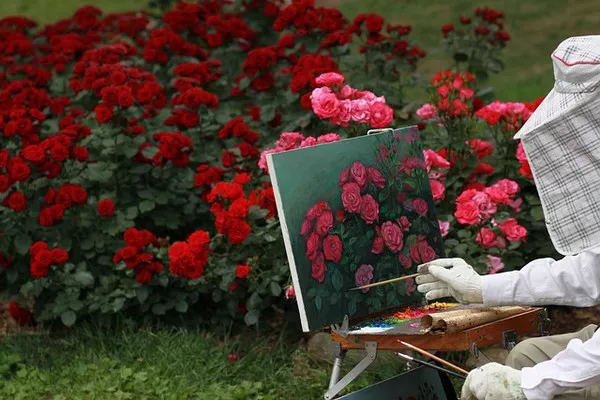Throughout human history, flowers have captured the imagination and emotions of people across cultures and societies. These delicate creations of nature have held profound symbolic meanings, reflecting the intricacies of human existence and the cycles of life. Among the myriad interpretations, one prevailing notion stands out: certain flowers represent life itself, embodying the journey from birth to maturity and the cyclic nature of existence. This article delves into the profound symbolism that attributes the representation of life to specific flowers, exploring their cultural, historical, and biological significance.
The Essence of Life in Flowers
Flowers, with their captivating beauty and ephemeral nature, have long been associated with the essence of life. The intricate process of growth, blossoming, and eventual decay mirrors the human experience, marking the various stages of life’s journey. In this context, the representation of life through flowers is not only a metaphorical concept but also one rooted in the biological rhythms that govern the natural world.
The Lotus: A Blossom of Resilience
One of the most iconic symbols of life in many cultures is the lotus flower. Emerging from the mud, the lotus rises gracefully above the water’s surface, pristine and untouched by its origins. In Hinduism and Buddhism, the lotus symbolizes purity, enlightenment, and rebirth. Its growth process—nurtured by adversity—parallels the human ability to rise above challenges, embodying the essence of life’s resilience.
The Cherry Blossom: Beauty and Transience
In Japan, the cherry blossom, or sakura, holds profound symbolism, representing the transient nature of life and its ephemeral beauty. The sakura’s short-lived blossoming season, where delicate pink petals blanket the landscape before falling like rain, is often compared to the fleeting nature of human existence. This association imparts a sense of appreciation for the present moment, a reminder to cherish life’s fleeting but exquisite moments.
The Sunflower: Nurturing Vitality
The sunflower, with its bright and vibrant demeanor, symbolizes vitality, growth, and optimism. Turning its face towards the sun, the sunflower embodies the pursuit of light and energy—essential elements for life’s sustenance. It reflects the human aspiration to seek positivity and nourishment for a flourishing existence, making it a potent representation of life’s resilience and continuous renewal.
The Rose: Love, Passion, and Transformation
Renowned for its captivating beauty and fragrant aroma, the rose holds multifaceted symbolism that includes life’s journey of love, passion, and transformation. As the bud unfolds into a full bloom, the rose mirrors the blossoming of emotions and relationships, encapsulating the stages of life’s personal and emotional growth. Moreover, the thorns that protect the rose’s delicate petals serve as a reminder that growth often comes with challenges and trials.
Cultural Variations in Symbolism
While certain flowers bear universal connotations of life, the specific attributes associated with them can vary across cultures. For instance, the chrysanthemum in East Asian cultures, particularly in Japan and China, symbolizes longevity and rejuvenation. In contrast, in Western cultures, it often signifies honor and remembrance, frequently seen at funerals. This divergence highlights the intricate interplay between cultural contexts and the diverse interpretations of flowers as symbols of life.
Artistic Expressions: Flowers as Metaphors
Art and literature have embraced the symbolism of flowers as powerful metaphors for life. Paintings, poetry, and other creative mediums often use flowers to convey complex emotions and the human experience. Van Gogh’s vibrant sunflowers, for instance, portray the artist’s fascination with vitality and the cycle of life. Likewise, poems by renowned poets like Emily Dickinson often draw parallels between the transient beauty of flowers and the fleeting nature of existence, evoking profound introspection.
Scientific Correlation: Flowers and Life Cycles
Beyond symbolism, the biological connection between flowers and life cycles adds depth to their representation of life. Flowers, through their reproductive processes, embody the essence of creation and renewal. The intricate dance between pollinators and flowering plants ensures the continuation of life, as insects and animals facilitate the transfer of pollen, fostering new generations of flora.
Conclusion
The symbolic representation of life through flowers transcends cultural boundaries and historical epochs, tapping into the profound connection between nature and human experience. Flowers serve as reminders of the cyclic nature of life, mirroring the stages of birth, growth, transformation, and eventual decay. Whether through the resilience of the lotus, the transient beauty of the cherry blossom, the vitality of the sunflower, or the complex emotions represented by the rose, each flower reflects a unique facet of life’s journey.
As we gaze upon these delicate yet powerful creations of nature, we are invited to contemplate our own existence, appreciating the fragility and beauty of life itself. The diverse interpretations and cultural variations associated with flowers remind us of the interconnectedness of humanity and the natural world, fostering a sense of unity and shared experience. In essence, the representation of life in flowers is a testament to the enduring dialogue between human perception and the captivating realm of nature.


